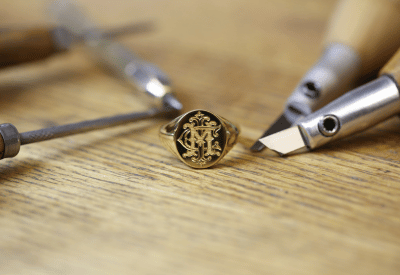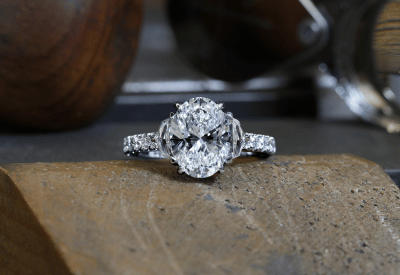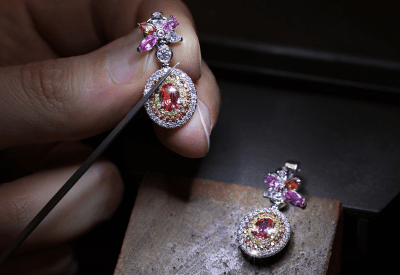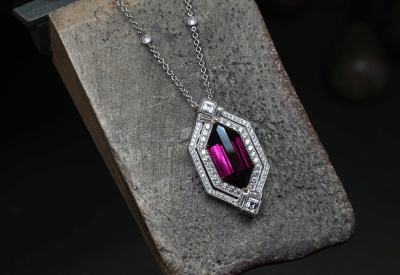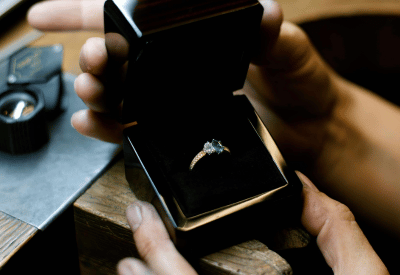1. Tell us a little about yourself and your journey into the design space.
I always wanted to be an interior designer. I can’t recall a time that I wasn’t interested in interiors.
My first job after school was in the visual merchandising department at David Jones. I worked there for three years and it was a fantastic experience, learning from the ground up how to create enticing displays and vignettes that resonated with shoppers. I still use the skills I learned on the job to create the window displays in the Cameron Kimber Design showroom in Woollahra. We change our windows every six months and always get great feedback from clients and passers-by.
After David Jones I worked in the visual merchandising department at Freedom Furniture. They gave me enormous creative freedom, allowing me to combine different styles. I’d place country pieces with a metal console and a modern sofa. The combining of classic and contemporary is a cornerstone of the Cameron Kimber Design aesthetic, so this early experience gave me the opportunity to experiment.
After I completed my interior design course at Randwick Technical College I was very fortunate to start working for the late and very great interior designer Leslie Walford as his assistant.

2. It sounds like the design world opened its doors for you?
I worked for Leslie Walford for two years which was fantastic! I would have stayed working there for the rest of my life, but I was poached by Thomas Hamel and became his first assistant. Thomas remains a great friend and it was with his encouragement and blessing that I started Cameron Kimber Design in 1998.I remember the day I started my own business. I was working from home. I’d turned my dining room into an office and I thought I was very grown up. I had a fax machine, a table and a phone. That’s how it all started. I haven’t had a rest since!
3. How do you describe your interior design style, and how has this evolved?
The signature Cameron Kimber Design look applies a layered approach to fabric, colour, furnishings, artwork and collectibles, always juxtaposing contemporary and vintage. I like antiques. I like comfortable sofas. I like pattern and I’m a compulsive collector.
I’m about ‘living’ and I find classic interiors easier to live with. I have a flat in Sydney which I like to look quite pristine and a house in the southern highlands where I prefer a more relaxed look. When I arrive at the country house on a Friday afternoon, the first thing I do is let my dog Jaspa jump around it a bit and de-fluff it so it just looks softer and more lived in.

The dining table in Cameron’s country house is ready to receive guests. His dog Jaspa claims a comfortable seat in a corner designed especially for him.

A compulsive collector, Cameron groups a collection of Chelsea porcelain against a backdrop of arsenic green
4. Are there any ‘go-to’ pieces or materials that bind your aesthetic?
I like comfortable seating. Cameron Kimber Design has a range of bespoke chairs and sofas that look good in classic or modern interiors. I love an ottoman. It softens a room. You can put your feet on it. You can put your drinks on it. You can put books on it.

Cameron Kimber sits on a trefoil ottoman, part of the bespoke seating collection available from Cameron Kimber Design
I think COVID has changed people. Our homes have become more important, and people want to be more comfortable. They want to have their family around and we want their home to be beautiful.
If I look at magazines and what’s happening overseas, I can see antiques are creeping back in. A lot of the really cool designers in LA and New York are looking at very classic rooms and classic houses and the way they were decorating in the 70’s and 80’s and rejigging the look and making it cool.
Old fabrics are being re-released and recoloured. Younger clients who were not aware of what was happening when they were little kids in the 80’s now walk into a room that has beautiful floral sofas and curtains and cushions and coloured walls and think “Wow - this is really cool”, because they haven’t seen it before. They want ‘granny-chic’ in a new way with contemporary paintings. The days of having a very plain grey sofa with a concrete floor and one lamp without not much else, are over. Even hotels are starting to look more domestic. Look at what Kit Kemp has done for Firmdale - she’s taken ‘soft’ and made it cool and made her hotels look like houses.
I like working with natural seagrasses and coir. I find when I’m using a beautiful antique piece it always looks smarter on matting. Whereas if you have a thick wool carpet and you put an 18th century antique on it it can look a bit old fashioned.
I love wallpaper. There was a time in Sydney I was probably the only designer using a lot of wallpaper, because it just wasn’t fashionable but I’ve always used it.

5. Do you have any solutions in working with challenging interiors?
If you can’t demolish the bad bits you’ve got to know how to disguise them and there are so many ways to do that.
- A little bit of architrave or skirting board can really help a room.
- If the windows are really low and you can’t make them taller, take the curtains to the ceiling and make a pelmet to disguise the fact that the windows aren’t tall.
- Raise the doors in a house.
- If rooms are in a row, I like to break openings onto them. So, if you have a family room, a dining room, a study and a sitting room all in row, I like to belt a hole in each one so you can sit in the family room and look right through.
- If you have big double doors – take them right to the ceiling and the house all of a sudden looks open and airy and has a sense of glamour.
6. Please share a favourite element of your home interior that captures the essence of your home.
I’ve got a huge ebonised secretaire in my city apartment. Putting that big, black bookcase into that very small space really made it because it’s very dramatic.
In the country house, which has a much bigger sitting room, I have a small green lacquered chinoiserie secretaire. To me it made the room. I had lusted after that piece for years and I finally managed to acquire it at auction so it has a lot of meaning to me.

An oversized secretaire adds drama to the bedroom in Cameron’s city apartment.

The green lacquered Chinoiserie secretaire in Cameron’s country house is a prized possession.
Cameron's Top Four Selects
-
Chagrin D'Amour Dinner Plate - I really like the texture of this plate. The band of colour will look beautiful on any table while the food sits on the white background. I think food always looks better on white.
-
Ercuis Sequoia Dinner Knife - I love the simplicity of this knife. It has the ideal weight and the lines have the feel of the 1930s. The design would work equally well in either a traditional or modern setting.
-
Rocks Crystal Old Fashion Glass Set of Two - This is the perfect gin and tonic glass. The weight feels particularly luxurious in the hand. The colour would also work well as part of a table setting, mixed with plain or crystal cut glassware.
- Idra Murano Water Glasses Set of Six - These tumblers would look perfect sitting on a bedside table in a guest room. They would also add a nice casualness to a dinner or lunch table.


cameronkimber.com | @cameronkimberdesign
browse FairFax & Roberts homeware




